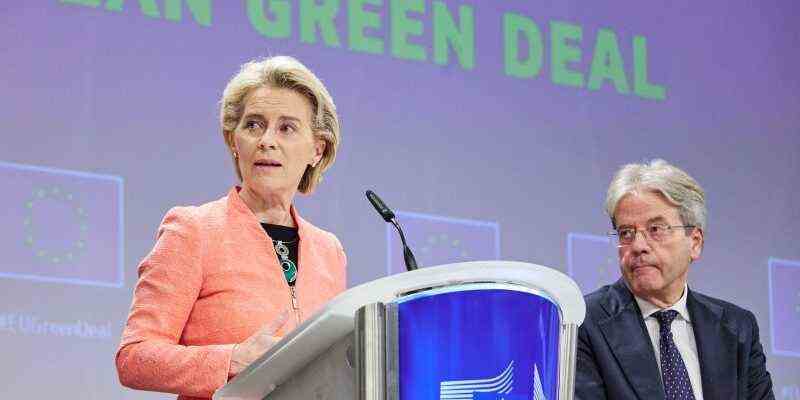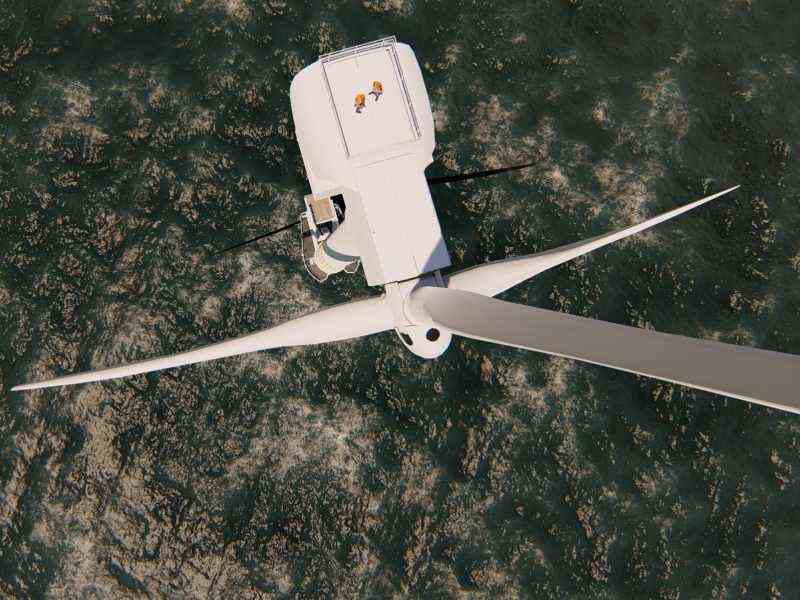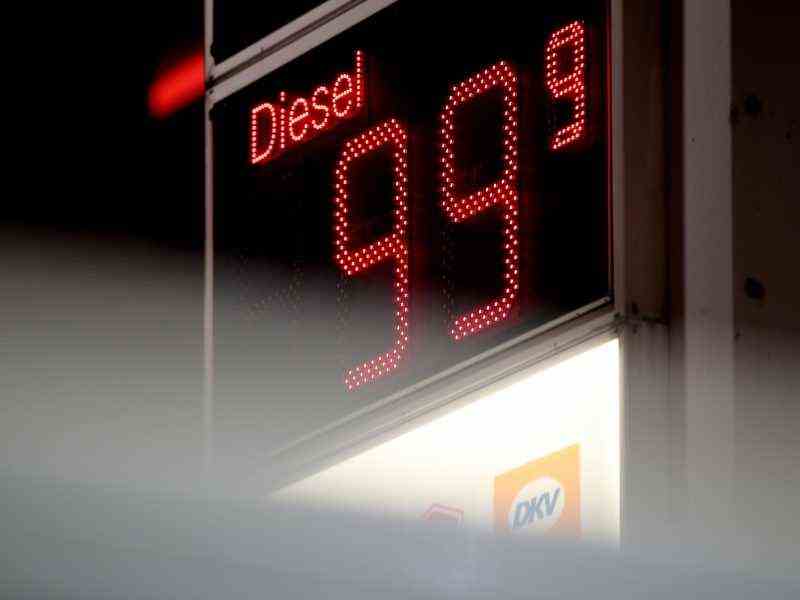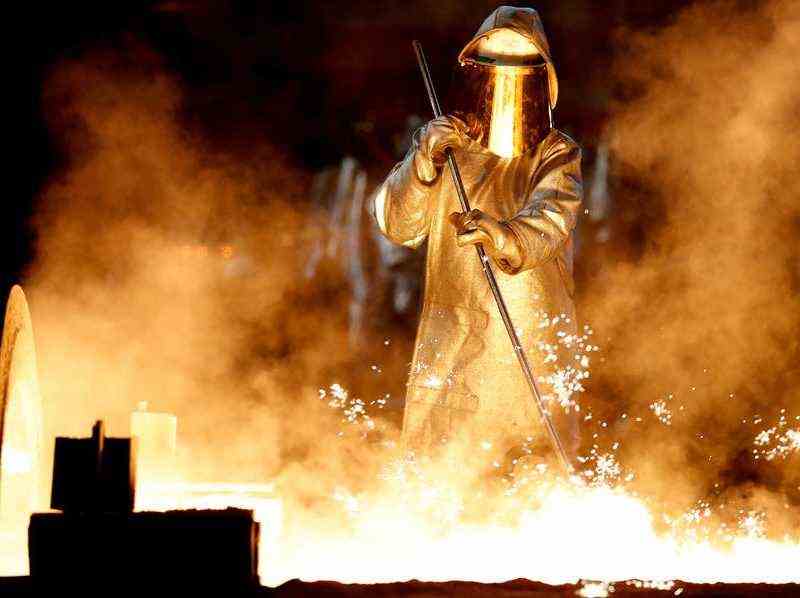With its proposed reform of the EU Emissions Trading Scheme (EU ETS), the European Commission is bringing carbon pricing policies to new areas such as shipping, road transport, and buildings. However, it is the fate of industry and ordinary people that is getting all the political attention.
The EU ETS currently covers the power sector, the manufacturing industry, and intra-EU flights.
With the reform, the Commission proposes to extend the EU carbon market to shipping and aviation while setting up a new separate ETS to tackle emissions from transport and heating fuels.
The aim is to cut the EU’s carbon emissions by 55% before the end of the decade and bring clean energy to areas like transport, buildings and industry, where fossil fuels still dominate and emissions reductions are more costly to achieve.
But European Commission President Ursula von der Leyen also made it clear: Decarbonisation efforts cannot come at the expense of businesses and workers, who need to come out stronger from the green transition.
“The European Green Deal is our growth strategy,” von der Leyen insisted when presenting the EU’s new ‘Fit for 55’ package of climate policy proposals on Wednesday (14 July).
And fairness will be one of the key priorities when extending carbon pricing policies to new areas, with the creation of a new social climate fund to shield the poorest households from higher fuel prices.
Over the 2025-2032 period, the new fund is expected to mobilise €72.2 billion in fresh money, providing direct income support for vulnerable households impacted by the change, and supporting investments into clean heating and mobility.
“If you look at transformations in Europe, every transformation, we were successful when we combined market-driven measures with the right social balance,” von der Leyen said. “This is at the core of our social market economy”.
More funding under the reformed ETS
In the reformed ETS, this means more funding will be channelled to the EU’s innovation and modernisation funds, which will roughly double in size.
“We are not going to let our industry down. And we’re not going to make policies to de-industrialise the EU, it would make no sense from an economic and environmental point of view,” said a senior EU official who briefed journalists before the Commission’s ‘Fit for 55’ package was presented.
The innovation fund, which supports first-time innovators in developing low-carbon technologies, will be almost doubled in size with a firepower of more than €50 billion at current ETS prices over ten years, the official explained.
At the same time, the European Commission will more than double the modernisation fund, meant to help poorer EU member states invest in clean energy.
The move is meant to assuage concerns of countries like Poland, which is still reliant on coal for close to 80% of its electricity and faces higher decarbonisation costs than other member states.
However, the proposed reform will not bring the money necessary for the transformation, according to the Polish electricity industry, which estimates that new investments worth €136 billion will be needed by 2030 in Poland to reach the EU’s clean energy goals.
“This amount exceeds four-fold the total amount of currently available national and EU funds for the decarbonisation of the Polish economy, and thus additional financial support will be needed,” said PKEE, the Polish electricity sector association.
“We believe that the Modernisation Fund should be increased significantly,” it said in a statement.
Another concern for Poles is the restrictions the Commission has placed on the modernisation fund, which prohibits investments in natural gas. According to PKEE, gas power plants and cogeneration units in district heating systems are “the only solution to progressively withdraw coal-fuelled units and switch to less emitting gas as an intermediate fuel on the way to carbon neutrality”.
A fairer market?
The demands of the Polish electricity sector illustrate a fundamental shift in the political debate over carbon pricing. With the reform of the EU ETS, much of the conversation is now expected to focus on how the effort should be distributed between EU member states and across industries.
As Europe tightens the cap on emissions, EU carbon prices are expected to reach €85 per tonne towards the end of the decade, according to the European Commission. Others believe the price could even reach €120 by then.
“A carbon price towards €100 per tonne by 2030 is pretty much in line with our own forecasts,” said Hæge Fjellheim, director of carbon research at Refinitiv, a carbon market data analysis firm.
And at those kinds of prices, solidarity with poorer households but also between EU member states will become central to the political debate, she told EURACTIV in a telephone interview.
“With a higher carbon price, you also get more revenues to help decarbonise the economy. Who should be the recipients of those funds is going to be one of the key subjects of discussion in the next few years,” Fjellheim said.
Distribution key
Poland is positioning itself at the forefront of this debate.
In a statement, PKEE said the ETS reform is “an excellent opportunity to seek a more accurate allocation key to ensure that low-income countries have sufficient revenues in their national budgets to cope with energy transition”.
Currently, 2% of revenues generated by ETS auctions across all 27 EU member states are being fed back to the EU modernisation fund, where they are redistributed to the 11 poorest EU member states to help modernise their energy sector. Under the proposed new system, the percentage will more than double and reach 4.5%, according to the EU executive.
But there are discussions on how this money should be used in the future, with the European Commission proposing to ban investments in gas.
According to Fjellheim, this topic is likely to be “quite prominent” in the upcoming political discussions between EU member states and the European Parliament, because most of the auction revenue is currently going to national governments, who can essentially use the money as they please.
“These auction revenues are currently what helps national governments finance policies to decarbonise their economies and to cope with higher carbon prices. So any proposed changes in the distribution key is likely to be a matter of intense debate,” Fjellheim said.
Florian Rothenberg, another carbon market analyst, agreed, saying a higher carbon price is in the interest of Poland, which will benefit directly from a bigger modernisation fund.
“As long as fossil-reliant member states get enough revenues from the ETS, they will be able to make those investments and bridge that gap” with wealthier EU countries, said Rothenberg, who is a carbon market analyst at ICIS, a global commodity intelligence service firm.
However, he predicted tough discussions ahead on how the auction revenues will be shared among EU member states.
“Some countries are quite decarbonised and they will have to relinquish some of their revenues from ETS auctions if they want other countries to get on board,” Rothenberg said.
“That’s the trade-off. It’s a European system, and you have to decide what country gets how much of the pot, basically. You have to make sure that there is a fair treatment.”
But high carbon prices also have negative consequences in the short term because they inflate costs for the power sector and industry, which need to pay a higher price for EU emission permits.
When gas prices were still low in the 2019-2020, there were high levels of fuel switching, with gas power plants replacing coal units, Rothenberg explained. But this year, the winter was longer and colder than usual, which depleted reserves across Europe, pushing up gas prices as a result.
“And that has basically triggered a switch back to coal generation,” which became cheaper than gas as a result, Rothenberg said, a trend that was reported recently by the International Energy Agency.
COAL MARKET: From @IEA annual Electricity Market Report. “Coal-fired electricity generation […] will increase by almost 5% in 2021 to **exceed pre-pandemic levels**. It will grow by a further 3% in 2022 and **could set an all-time high**” https://t.co/HTSe56DCk1 #climatecrisis
— Javier Blas (@JavierBlas) July 15, 2021
Is EU carbon price too high?
So could carbon prices be too high? Again, Poland is first in line to warn about such a risk, with the country’s climate and environment minister, Michał Kurtyka, raising “concerns over the potential speculative nature of the volatility”, which he said could undermine the carbon market’s ability to deliver on the EU’s climate objectives.
Although Warsaw does not oppose high carbon prices in principle, the short-term negative effects on the economy “can lead to cost pass-through and hindering the green transformation,” especially during the recession caused by the COVID-19 pandemic, he wrote in April, when prices were getting close to €50 per tonne.
Kurtyka did not say whether Poland would support a carbon price ceiling, but EURACTIV understands that Warsaw supports the idea, provided the ceiling is not too high.
The discussion over carbon price “corridors” – with a maximum and a minimum – to prevent speculation on the market is not new. However, it has tended until now to focus on introducing a price floor in order to deal with depressed prices on the EU ETS, not a ceiling.
According to Rothenberg, a price ceiling may not be necessary because there are already safety mechanisms in place to prevent the carbon price from escalating too quickly.
“If for example, the number of allowances in circulation drops below 400 million, you will get supply back to the market via the market stability reserve, which can release 100 million allowances. This also happens when prices rise to quickly in a short period of time,” he explained.
However, he does expect that the issue of high carbon prices will come up again in the political debate. “We have seen some member states like Poland and Spain that have highlighted their concerns already. So we could see proposals to see these mechanism further strengthened.”
Power sector low-hanging fruit ‘gone’
In the longer term though, higher carbon prices are welcome by most because they accelerate investments in renewable energy.
Market interest in renewables was already noticeable in the past years, despite a relatively modest carbon price of around €20 per tonne, Rothenberg says. Now, with prices firmly above €50, he expects an acceleration in the clean energy transition.
“In the years ahead, renewables will be really profitable for investors. And I think that will really kick off in the next years, especially with the high power prices that we have at the moment,” Rothenberg said. “There’s no more need for subsidy in many places so it will be just driven by the carbon price and by the market price for power.”
Perhaps a bigger concern is the impact that a tighter carbon market will have on industry.
Until now, the most visible effect of the EU ETS has been to trigger fuel switching from coal to gas and renewables. But getting emissions reductions beyond the power sector will be the hardest part, and a different ball game altogether, said Hæge Fjellheim from Refinitiv.
“Much has been achieved thanks to higher cabron prices inducing fuel switching from coal to natural gas, which is the low-hanging fruit,” Fjellheim said. In other terms, “the abatement potential in the power sector will diminish over this decade,” she predicted.
Turning up the heat on industry
And with the electricity sector cleaning up its act, attention is shifting to industries like steel, cement, and chemicals, where emissions reductions are more costly.
“A lot of the burden will be on energy-intensive industries, because the low-hanging fruit in the electricity sector is already gone,” Fjellheim said. “With the focus shifting to industry, emission reductions are going to be more difficult to achieve. This is why you need a strong price signal of up to €100 per tonne,” she said.
According to Rothenberg, Europe’s industry has been relatively spared from high carbon prices until now because they received most of their CO2 allocations for free. Smaller industry players in particular have not been very active in the ETS and often purchase allowances at the last minute, just ahead of compliance deadlines, he remarked.
“That won’t work anymore in the next years, they will have to change their buying strategy, especially if free allocations decline,” he said.
Some have already started to prepare. In Sweden, a start-up called H2 Green Steel, is on its way to launching the world’s first large steel production plant powered by green hydrogen in the northern part of the country. A Swedish test plant, called ‘Hybrit’, already uses green hydrogen produced exclusively in Sweden.
And in Germany, the government has made €5 million available to the Salzgitter AG group to produce climate-friendly steel as part of a wider industrial decarbonisation project.
Still, CO2 abatement costs in those sectors remain prohibitively high at the moment, meaning they require a higher carbon cost to be profitable.
“We are starting to see big projects for green hydrogen steel here and there,” Rothenberg said, adding some of those projects are already becoming viable with a carbon price of €50-€60.
“These are only small examples right now, but we expect to see a growing number of projects like this in the next years. And if that does not happen in the next years, I would expect the carbon price to increase further until that happens.”
To bridge the price gap, the European Commission is proposing to introduce so-called carbon contracts for difference (CCfD), which allow EU countries to provide state aid to firms making investments in clean technologies. Governments pay out the difference between the price of emissions allowances (EUAs) on the carbon market and a pre-agreed CO2 contract price, thereby ensuring a guaranteed carbon price for clean energy projects.
According to the Commission, “the size and scope” of the innovation fund will be extended to support such government-funded projects using CCfDs.
The idea was pushed by Germany and welcomed by Peter Liese, a senior German EU lawmaker from the centre-right European People’s Party (EPP) and a key ally of Commission President von der Leyen in the European Parliament.
For instance, companies that invest in green steel production will also be offered free allocations under the ETS in order to encourage them to invest, Liese explained. “They can get free allowances for five more years. So you can get a lot of cash from the ETS,” he said.
“We want to decarbonise industry, not de-industrialise Europe,” Liese insisted. “This is very important for the EPP”.
Carbon border adjustment mechanism (CBAM)
There are other incentives for industry in the EU’s ‘Fit for 55’ package.
The most controversial is a proposal to put a carbon price on goods imported in the EU, the so-called carbon border adjustment mechanism (CBAM).
The levy will apply gradually to six sectors, which already benefit from free allocations under the ETS: electricity, iron and steel, aluminium, fertilisers, and cement. Those will be phased out completely by 2036, leaving these sectors time to adjust.
According to the European Commission, the move “will ensure that our climate ambition is not undermined by foreign firms subject to more lax environmental requirements” while encouraging foreign countries to decarbonise as well.
The move has already stoked fears among emerging countries like China, which raised “grave concerns” about the carbon levy creating new barriers to trade.
And in Europe, some are worried the EU carbon border levy could trigger a trade war.
“It is already clear that many would regard the existence of free allocation alongside the levy as a ‘double protection’ providing them with a rationale for retaliation,” warned Connie Hedegaard, a former EU climate commissioner, and Pascal Lamy, former World Trade Organisation director-general.
“That such tensions could persist and ultimately lead to a trade war would not only damage the EU’s climate leadership” and risk sinking international climate negotiations, the pair wrote in an opinion piece for EURACTIV.
However, carbon market analysts believe some form of border protection will be needed in Europe in order to make enough space for industry to decarbonise.
“The Green Deal is not only about reaching a climate target, it’s also about Europe coming out of the process with a stronger, greener economy,” Fjellheim says. “The whole ‘Fit for 55’ package is also much about helping industries green their operations and inciting other countries to step up their climate action,” she explained.
According to Fjellheim, the Commission’s proposal to gradually phase-out free ETS allowances over a ten-year period was probably a carefully balanced decision. “The Commission has chosen a cautious approach, probably both to ensure backing from European industry and policymakers and to avoid stirring up international partners,” she said.
Rothenberg agreed, calling the Commission proposal a compromise that seeks to balance the interests of Europe’s industry with trade concerns.
However, he predicted that “the political process to get this approved will be really hard, because the Commission is facing pressure internally from the industry and externally from potentially affected countries”.
“It has to be a carefully designed instrument so that there are no windfall profits and that allocations are only distributed to companies which are exposed to the risk of carbon leakage,” Rothenberg said.
[Edited by Zoran Radosavljevic]





